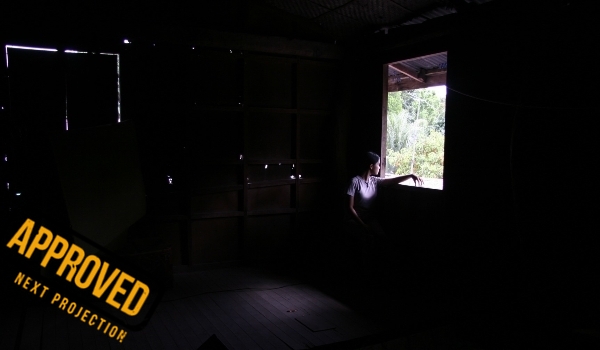Review: ANG NINANAIS
Nick Deocampo’s 1992 essay entitled Revolution and Dissent: The Struggle for a Counter-Cinema in the Philippines foreshadowed the rise of independent cinema which everyone now is calling the Philippine New Wave of the 2000s. It characterizes a dynamic type of cinema wherein the interplay of historical and political ideologies assimilates within the aesthetics and thematics of films resulting to its pluralized status. Deocampo characterizes this counter-cinema as “anti-illusion”, “socially relevant”, “subjective”, and “abstract”. A cinema dominated by three overriding mode of practices: “experimentation”, “realism”, “independence.” These become tools reintroducing the viewers to the nationalistic consciousness by revolting against the illusionist cinema of the Hollywood system.
Within this open precipice a revolution began. John Torres’ audacious experimentation in Ang Ninanais sits within Deocampo’s illustration of the local counter-cinema: a counter-cinema that do not only collects the cultural and political ideologies of its time but also opens new questions to aesthetics akin to its revolutionist visions. In its effort to destroy the tradition of illusionist cinema, Ang Ninanais pedagogically construct an improvised history that opens debates in politics, ideology and the evolution of film language.
Ang Ninanais is about a quixotic girl named Sarah and her quest to resolve conflicts, both inherent and formalistic in nature, within the story. The grand narrative of the film is composed of more or less four sub-narratives: the non-diegetic voice over of Torres himself mellowing the uncanny plot of the film with poetic verses about love; a diegetic world arranged in a non-linear and associational fashion wherein Sarah moves as a phantom; a ‘subtitle narrative’ which narrates a different story from the spoken words of the diegetic character; and an ‘inter-title narrative’ which acts independent to the three other sub-narratives narrating a pseudo-history of the Panay island during the 1900s. In a jagged assimilation, Torres stitches these four sub-narratives finalizing in crescendo with a message about the revolution of the Filipino people.
This parametrize quality of John Torres film is exceptionally brilliant and unique in Philippine cinema. It refurbishes, almost reawaken the intensity of the local underground movement. Torres’ personal input is self-revelatory, almost as if he himself assimilated inside his own material. He admitted, in an open discussion during one of his private screenings, that the process of making the film comes from his effort to piece together collected shots during his trip at the Panay island using fully improvised ideas. He refused to adhere to conventional modes of filmmaking that even the validity of his historical and linguistic information is questionable. He mentioned that the intertitles were are result of his partial understanding of the Panay history and that his subtitling methods are his own understanding of the language without the aid of a professional translator. This method resuscitates a unique approach to regional filmmaking in the Philippines. It describes a method wherein the filmmaker approaches a subject from the outside as reflected in the inside. This is less intrusive, less penetrative to the regional culture and language with its intent to only document the filmmaker’s internal relationship with the culture of his interest, as oppose to many filmmakers who lords over his subject.
This constructional vision resulted to an extreme annihilation of conventions which defamiliarizes us from the somnolence of the contemporary Hollywood cinema. The subjective approach of John Torres reinstate the plasticity of the medium directed towards battling the personal to John but foreign to us. It is as if the film is about the ideological battle of oneself to his locale, as it is of oneself to his country. At the end of the film, Torres concludes about the revolution of the Rizal being unsuccessful, summoning an armed revolution. It is as though John commands its armed revolution to be the revolution of the cameras, and the camera being an indispensable tool against the foreign hegemony Deocampo characterized in his essay. Through its dynamic web of sub-narratives, Ang Ninanais obliterates the audience’s animated senses extending their visions of cinema, thereby, pluralizing itself, and plummeting itself into the depths of their nationalistic consciousness, so lost in the hegemonic strand of the times.















 Review: ANG NINANAIS
Review: ANG NINANAIS Review: Beginners
Review: Beginners Review: Drag Me To Hell
Review: Drag Me To Hell Review: ARMADILLO – Presented by the TIFF Bell Lightbox
Review: ARMADILLO – Presented by the TIFF Bell Lightbox Trailer: Mysteries of Lisbon
Trailer: Mysteries of Lisbon

























































